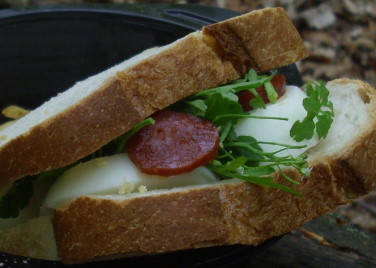Bittercress
By Mike on Monday, May 4, 2009, 19:38 - Permalink
We went for a walk and picnic in the New Forest - I added a bit of freshness and zing to my sandwiches - in the form of bittercress.
What Is Bittercress?
Cardamine spp - Common weeds in gardens and cultivated or disturbed soil, also found in meadows and woodland, particularly at the edges of paths or clearings.
As the name suggests, it does taste like cress, but contrarily, is not noticeably more bitter than the ordinary cress one might grow on the windowsill or buy in a shop.
Growing usually no taller than about 10cm, it's easy to miss entirely, and would be tiresome to gather if it were not the case that many specimens can be found growing quite close together.
I found these plants growing by the side of a path as we were looking for a suitable place to settle down and eat our picnic lunch. I'm not sure which species of bittercress I have here - there are a few, and they're all quite similar.
I'd packed bread, hard boiled eggs and some slices of chorizo - the bittercress was the perfect addition to these in a sandwich - the peppery tang of the bittercress complemented the eggs particularly well.

This overlooked wild plant (or despised weed) needs a bit more love, I think - it's easily as good as some of the minor salad leaves on sale in supermarkets.
Picking And Eating Bittercress
A small plant like this will often suffer from soil-splash, so the leaves might need a good wash after picking.
The leaves, stems and flowers are all edible, however, in older specimens, the stems may be tough and fibrous.
